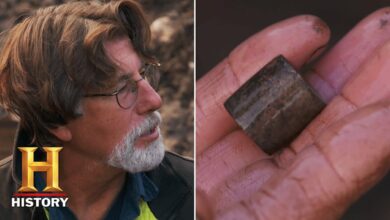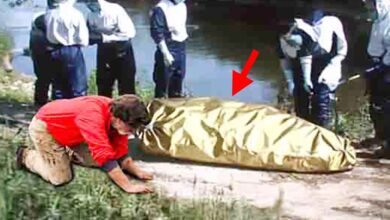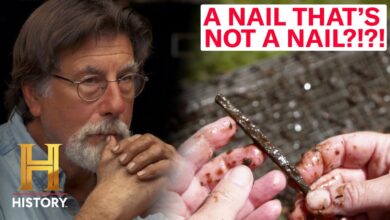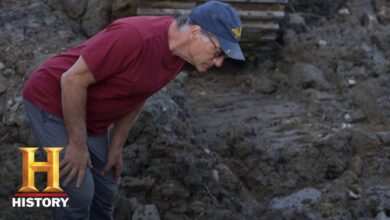The Oak Island Mystery: After 220 Years, What’s REALLY Buried in the Money Pit?
The Oak Island Mystery: After 220 Years, What's REALLY Buried in the Money Pit?

What if I told you that off the coast of North America, on a small, unassuming island, lies a secret so profound it has baffled treasure hunters for over two centuries?
A secret protected by ingenious traps, whispered about in coded messages, and guarded by a curse that has claimed both fortune and lives.
This is the story of Oak Island and the Enigma at its heart, the Money Pit.
It’s a treasure hunt that has consumed generations.
But the ultimate question remains, what lies beneath?
Welcome to Oak Island, a 140 acre in the vast expanse of Mahon Bay, Nova Scotia.
To the casual observer, it’s just another piece of the rugged Canadian coastline.
But for those in the know, this island is the setting for the world’s longest-run and most frustrating treasure hunt.
It’s a saga of hope, obsession, and mind-boggling engineering that began with a simple discovery by three curious teenagers.
The year is 1795.
A teenager named Daniel McInness is exploring the island when he stumbles upon something peculiar.
A circular depression in the ground about 13 ft across.
Above it, a thick oak branch has been sawed off, and the cut marks are old.
Stranger still, hanging from the limb is a tackle block, the kind used on old sailing ships to lift heavy cargo.
McGinness’s mind raced with tales of pirates who frequented these shores.
Had he just found the hiding place of legendary treasure, perhaps even Captain Kidd?
Excited, he returned with two friends, John Smith and Anthony Vaughn.
They began to dig.
Just two feet down, their shovels hit solid flag stones.
Encouraged, they kept going.
At 10 ft, they struck wood.
It wasn’t a chest, but a platform of thick oak logs sealed tightly together.
They had never seen anything like it.
This wasn’t a simple buried chest.
This was something constructed, something deliberate, but their simple tools were no match for the task.
The mystery would have to wait.
Nearly a decade later, the stories of the boys’ discovery attracted serious investors.
The Onslow Company was formed, and the excavation resumed with proper equipment.
What they found was astounding.
At 20 ft, another oak platform.
At 30 ft, a third.
Every 10 ft, the diggers were met with another layer of oak.
But there was more.
They found layers of charcoal, a strange fibrous material later identified as coconut fiber, something not native to Nova Scotia.
And a layer of putty like the kind used to seal barrels on ships.
The years rolled on and a new group, the Truro Company, took over in the 1840s.
They brought a horsepower drilling rig to the site.
Determined to reach the bottom, they drilled past the 90 ft mark, hitting Morwood.
Then, the drill bit seemed to drop through a space before hitting Morwood as if it had punched through the lid of a chest.
But as they pulled the augur up, a torrent of water began rushing into the pit.
Frantically, they tried to bail it out, but it was useless.
The pit flooded to the 30-foot level and stayed there.
They had sprung the trap.
The engineers had created a brilliant, devastating booby trap, a flood tunnel connected directly to the nearby ocean.
Before the flood, the Truro company made one of the most tantalizing discoveries of all.
At the 90 ft level, they unearthed a large flat stone inscribed with a bizarre set of symbols.
For years, the stone was a local curiosity.
A Halifax professor who studied it claimed to have deciphered the code.
The translation was electrifying.
“40 ft below 2 million pounds lie buried.”
Was this a genuine clue left by the depositors or another layer of misdirection?
Tragically, the stone itself has been lost to history—used as a fireplace hearth before its significance was fully understood.
All we have are drawings of the symbols, leaving the translation forever in dispute.
By the 20th century, the money pit had become a legend, attracting dreamers from all walks of life.
Among the most dedicated was Robert Restall, a former circus performer who moved his family to the island in the late 1950s.
For 6 years, they lived a rustic life, pouring everything they had into the search.
But in 1965, tragedy struck.
While investigating a shaft, Robert Restol was overcome by poisonous gas.
His son, Bobby, rushed to save him, but he too was overcome.
Two other workers who tried to help also perished.
This event cemented the legend of the Oak Island curse, a prophecy that claimed seven men must die before the treasure would be found.
The rest all tragedy marked the fifth and sixth deaths.
For decades, the mystery laid dormant.
Then in the early 2000s, two brothers from Michigan, Rick and Marty Lagginina, purchased a controlling interest in the island.
Fueled by a lifelong obsession that began with a Reader’s Digest article, they brought a new level of funding, determination, and technology to the hunt.
Rick, the passionate believer, and Marty, the pragmatic engineer, assembled a team of experts to apply modern science to the centuries-old problem.
Their efforts, documented in the hit TV series, The Curse of Oak Island, have yielded some of the most compelling evidence to date.
They’ve used seismic testing, deep ground radar, and massive drilling operations.
They found a Spanish coin dating to the 1600s, fragments of human bone from both European and Middle Eastern descent, and a mysterious lead cross with potential links to the Knights Templar.
In one borehole, a camera captured a flash of a shiny gold colored object, only for the shaft to collapse before it could be identified.
Each find deepens the mystery and adds a new piece to the puzzle.
So, what could be down there?
The most obvious theory is pirate treasure.
Was it Captain Kidd, who was rumored to have buried a vast fortune before his capture?
Or perhaps Blackbeard himself?
The sheer complexity of the money pit, however, seems beyond the capabilities of a typical pirate crew.
They were raiders, not master engineers.
But the coconut fiber found hundreds of miles from the tropics does suggest a link to seafaring men who traveled the Spanish Main.
A more grandiose theory points to the legendary Knights Templar.
The theory suggests that after the Templars were disbanded in the 1300s, they used their vast fleet to transport their sacred treasures, perhaps even the Holy Grail or the Ark of the Covenant, to the New World for safekeeping.
The lead cross found by the Laginus bears a striking resemblance to Templar designs.
Could Oak Island be the final resting place of history’s most sought-after religious artifacts?
Other theories abound.
Some suggest it could be the lost jewels of Marie Antoinette spirited out of France during the revolution.
Others point to Francis Bacon who may have used the pit to hide manuscripts proving he was the true author of Shakespeare’s plays.
And of course, there’s the skeptical view that the money pit is nothing more than a natural sinkhole, a geological anomaly filled with debris that has been misinterpreted by generations of hopeful searchers.
But a sinkhole doesn’t explain the oak platforms, the coated stone, or the intricate flood tunnels.
After more than 220 years, six lives lost, and hundreds of millions of dollars spent, we are no closer to a definitive answer.
Oak Island remains a masterclass in mystery, a testament to human ingenuity and obsession.
It is a puzzle box built on a grand scale, and its secrets are still fiercely guarded.
The real treasure of Oak Island may not be gold or jewels, but the enduring power of a story that captures the imagination.
And so, the search goes on.
What do you think lies beneath Oak Island?
Let us know in the comments below.








